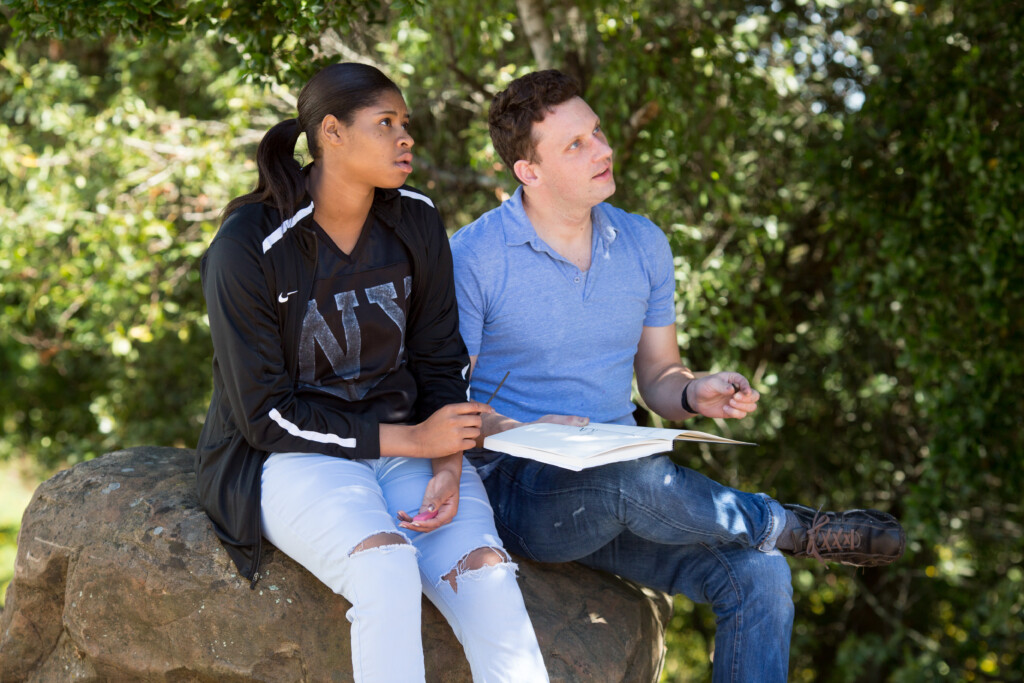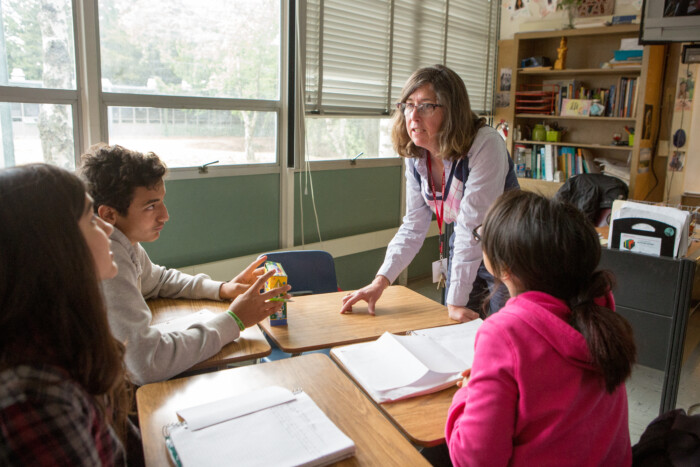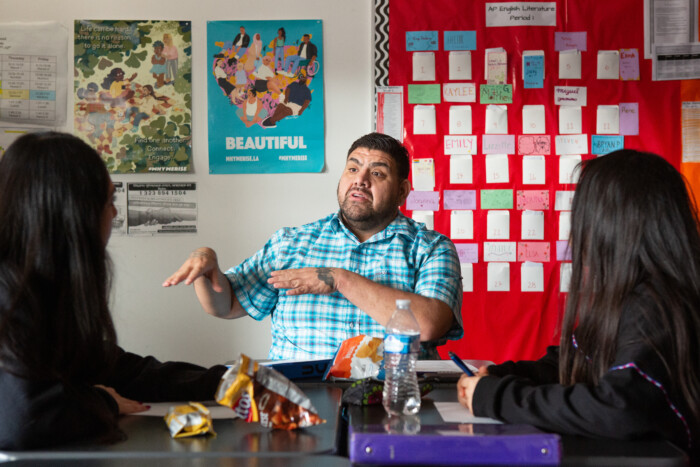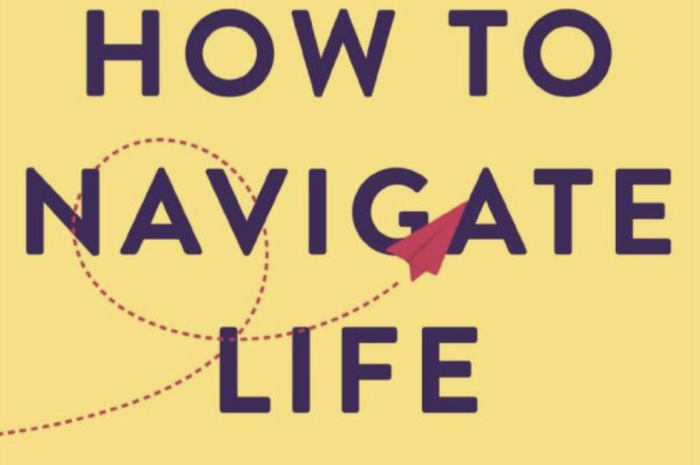The Five Core Elements of Advisory
Advisory systems are a way for students to build relationships with adults and peers, reflect on their learning, and set goals for the future. They also help students explore career options and plan for postsecondary education.
2.1 Progress Planning and Reporting
2.2 Supports
2.3 Career Exploration
2.4 Postsecondary Planning
2.5 Pathway Authoring



Complementing the important work of school counselors, an advisory structure is a distributed counseling system that engages all learners in small groups several times a week with an educator (teachers and in some cases support staff and administrators). In EL Education network schools the advisory system, called Crew, “is daily meetings in which students gather regularly with a small group of peers and a staff Crew leader for mutual support and accountability.”
“Crew creates a daily opportunity for students to build healthy relationships with adults and peers, to have honest and courageous conversations about the issues that impact their lives, and to take on leadership in the school and in their communities. It’s a place for them to discover a sense of belonging, define their purpose, and strengthen the skills and convictions necessary to take positive action to create the world they want to live in.”
Successful advisory systems have clarity of purpose. Pacific Heritage Academy in Salt Lake has a purpose statement for advisory: “Crew creates a culture that is safe, where students are nurtured and known well by at least one adult.” They add, “Crew provides time and opportunities for students to self-reflect on their learning and character development.”
Shatera Weaver on Crew
Secondary schools in the EL network schedule Crew 3-5 times per week for 30 to 50 minutes. Elementary schools often meet daily for shorter periods. Most EL schools are single-grade and stay together for 2-4 years, but others make effective use of multi-age advisories and incorporate mentorship.
Summit Public Schools
At Summit Public Schools, teachers mentor the same group of students each year in advisory groups, which allows them to build strong relationships based on deep trust over multiple years. Mentors meet 1:1 with each student regularly to coach students toward their personal goals and meet daily as a mentor group.
Building 21
Students at the Building 21 lab schools are assigned to an advisory that loops with them through graduation. Advisory focuses on personal development through their Habits of Success competencies, building relationships with adults and peers, and supporting the development of students’ personalized learning plans.
Latitude High
At Latitude High in Oakland, advisory is where students build some of their most important relationships with their peers and a trusted adult, build their socio-emotional skills, learn to hone their physical and mental well-being and work to discover their interests and sense of purpose for career and life.
Big Picture
In the Big Picture school design, each student is paired with an advisor (similar to a homeroom teacher) whom they stay with from enrollment until graduation. Advisors meet daily with this small group of no more than eighteen students to facilitate group discussions, literacy circles, social-emotional learning workshops and support them in developing projects connected to their internship experience.
Functions of Advisory
Advisory systems vary in purpose, scope and structure. Successful secondary schools typically have a strong advisory system that shares five core functions and the most robust versions play additional roles in supporting students.
Progress Planning and Reporting
Strong secondary schools use advisory systems to reflect on social and academic growth, set short and long-term goals, and help learners tell their stories.
At Summit Public Schools, the student dashboard on the shared learning platform tracks progress in cognitive skills, content knowledge and habits of success. With advisory support, students set goals, make plans, demonstrate their skills and knowledge, and reflect on their progress. This Self-Directed Learning Cycle will help them well beyond their years in school.
At Lindsay Unified, “Learners work toward meaningful short- and long-term goals and can articulate why they are prioritizing these goals, how short-term goals (e.g., success on daily work) build toward long-term goals, and what success looks like at each stage.” Lindsay learners develop a Personalized Learning Plan (PLP) that includes goals and sets for accomplishing those goals. The plan helps them articulate what they are working on, why, and how it relates to their goals.
Sharing students’ growth requires a nuanced reporting mechanism and/or processes that prioritize clear and effective communication with a family/guardian. Previously, this was accomplished by the one-dimensional academic transcript and report card. Today, it can involve student-led conferences that build ownership and encourage quality work. Reporting also can include transcripts showcasing student mastery of skills and behaviors, insights drawn from achievement levels and growth rates, interests and motivational factors, and other context variables such as in the form of a learner profile.
Headrush Learning
Headrush Learning is a project-based learning platform that helps track competencies. Headrush organizes evidence of learning for learners at Latitude High in ways that showcase completion while also supporting the story of the learner’s journey.
One Stone Lab 51
At Boise’s One Stone, the Growth Transcript helps high school learners track progress on 32 competencies (Bold Learning Objectives) from weekly design studios to quarterly student-led conferences through to graduation. Learning Coaches (advisors) meet with learners weekly to gather evidence, track progress and set learning goals.
Mastery Transcript Consortium
School members of the Mastery Transcript Consortium track competency progression and share with employers, scholarship organizations and higher education institutions via mastery record.
Greenlight Credentials
Greenlight Credentials is a secure digital locker of verified credentials and required documents that follows students from high school into the workforce. Students control their records and can securely and instantly transmit credentials and other pertinent records. Advisors in North Texas high schools help students use Greenlight to unlock opportunities like scholarships, colleges, internships, work-study programs, and employment.
Supports
Advisory systems are the front line of monitoring the need for student support. They are often part of the foundation of a multi-tiered system of supports (MTSS) to ensure that all students’ needs are met through increasingly targeted interventions across three levels of support.
Personalized learning plans, often developed and updated in advisory, articulate learning goals and identify support strategies, extended learning opportunities and external resources.
The Community Schools
The Community Schools model transforms a school into a place where educators, community members, families, and students work together to strengthen conditions for student learning and healthy development. As partners, they organize in- and out-of-school resources, supports, and opportunities so that young people thrive.
Communities in Schools
Communities in Schools brings community resources into schools by embedding a coordinator to help connect students with additional supports to help them learn, advance in grade level and graduate.
Da Vinci RISE High
Da Vinci RISE High serves Los Angeles youth navigating foster care, housing instability, and the juvenile justice system. They do this alongside a network of youth development agencies, municipalities and support centers to provide counseling, case management, tutoring, job readiness training, career pathways, internships, extracurricular opportunities, leadership development and more. RISE sites are co-located with service providers.
Vaux Big Picture High School
Vaux Big Picture High School is a partnership between The School District of Philadelphia, the Philadelphia Housing Authority, Big Picture Learning, and youth and family services. Ninth graders take a real-world learning class to gain work-ready competencies and prepare for internships in tenth grade. Three Resilience Specialists run workshops in advisories on topics like goal setting, goal attainment and positive communication strategies. They also provide one-on-one and group counseling support services and serve as case managers to help students and families locate additional services.
Career Exploration
Advisory systems are often the focal point for career exploration. According to The Rennie Center, “research suggests that these outcomes are most prominent when students engage in career planning activities prior to entering high school, rather than during high school alone.”
American Student Assistance (ASA) notes that middle school is the most effective time for career guidance to occur:
“Students today are both excited and nervous about their life after high school. While still dreaming of what the future may hold, they must also map out a future for themselves that is both in line with their career interests and their educational expectations. That’s why cultivating a student’s understanding of their career aspirations and making certain that their educational goals are aligned with their career objectives are vital to a student’s long-term success. Career exploration is the cornerstone of this process, and research suggests that middle school is the most effective time for career guidance to occur.”
Individual learning plans (ILPs) are gaining traction as a strategy for promoting students’ college and career readiness and success. ILPs are student-directed plans developed in collaboration with teachers, counselors, and parents that document students’ academic and career interests. To date, 38 states use ILPs, with 21 states mandating them for use with all students.
Personalized Learning Plans
Personalized Learning Plans in Vermont provide students the opportunity to reflect upon their learning and shape their future while enabling the adults in their lives to better understand each student as a unique individual. They identify the student’s emerging abilities, aptitudes, and dispositions and guide decisions regarding course offerings and other high-quality educational experiences to attain postsecondary readiness and be prepared to engage actively in civic life.
High School and Beyond
The Washington State High School and Beyond Plan, provides students with the opportunity to explore their own skills and interests and discover potential career and educational options. This personalized plan helps to connect career interests with courses and courses with career pathways. Students should be encouraged to take ownership of their high school experience and choose coursework and activities that are relevant to their goals. The High School and Beyond Plan also provides a means of tracking requirements for graduation from high school and entry into postsecondary programs and careers.
Cajon Valley
Cajon Valley USD is the best example of K-12 career exploration with 72 World of Work immersive experiences that provide learners the opportunity to reflect on how their strengths, interests, and values align with possible futures. Each unit includes Exploration, Simulation, Meet a Pro, and Practice. Through this process, students have the opportunity to learn about careers, receive hands-on experiences, meet professionals, and practice skills needed for that career. Launch Pad, in partnership with San Diego Workforce Partnership, is a physical and virtual career workshop that provides personalized and localized guidance to middle and high school learners and their parents.

How to Navigate Life
You can’t know what to do with your life until you understand who you are. In How to Navigate Life, authors Belle Liang and Tim Klein suggest formal and informal assessments of strengths, values, and risk tolerance to inform a sense of purpose. They see universal skills cluster in three “future-proof” roles (creators, facilitators and drivers) as more work is being done in teams working on hard problems aided by smart machines.
Xello
Xello helps facilitate personal learning. Students complete interactive career, personality, and learning style assessments to help them better understand their unique interests, skills, and strengths.
YouScience Discovery
YouScience Discovery is a series of brain games that uncover learner aptitudes and interests and match them with best-fit careers.
EvolveMe
ASA curated and sponsors the direct-to-teen career exploration platform EvolveMe. This platform features 26 career experimentation and skills-building activities from 15 innovative partners.
Postsecondary Planning
Closely linked to career exploration is postsecondary planning, the process of helping students develop and implement a plan for learning after high school based on interests, skills, values and goals. Advisory systems complement and extend the work of college counselors in postsecondary planning by providing students with regular access to a trusted adult who can help them navigate the process.
Postsecondary planning often includes
- Exploration: review and visit different types of colleges and alternative pathways including apprenticeships.
- Planning: guide course selection, skill building, work-based learning, and extracurricular activities, that can impact postsecondary success.
- Application: apply to postsecondary institutions and scholarships including personal essays and letters of recommendation.
- Transition: complete graduation requirements and prepare for postsecondary enrollment. KIPP Forward adds alumni support to promote college success.
Pathway and postsecondary planning is particularly important for students from families with limited college success. Some dual enrollment pathways are specifically designed to support first-generation learners (e.g., P-TECH programs in St. Vrain Valley School District).
Karla Phillips-Krivickas notes “When students with disabilities turn 16, their individualized education programs (IEPs) must include a plan for their transition to post-school life. These plans are often underutilized in facilitating dual enrollment participation, but they should be the foundation for students’ postsecondary pathways.”
The personalized learning plan is at the heart of the East Bay Innovation Academy advisory program. Each fall the advisor, student, and student’s parents meet to develop the document. The PLP document starts with the end in mind: students and their families start in 6th grade by discussing and setting goals for what type of life they envision for themselves. What type of job? Where are they going to live? What qualities will they be known for? How will they give back to the world? How will they support their community?
From these questions, possible colleges are chosen, and then goals are set that need to be met in order to attend those colleges. Goals are then backmapped to “What does your weekly schedule in 6th grade need to look like in order to obtain this kind of life?” The PLP also pushes the student and family to set goals around social-emotional learning, character strength development, healthy living, and family relationships. The PLP document becomes a living document that is constantly re-visited by students, advisors, faculty, and family.
Dallas County Promise
Dallas County Promise supports students in 85 high schools in 12 districts to navigate their best-fit postsecondary options with the ultimate goal for students to be successful in college, career, and life. Promise Scholars can be offered a last-dollar tuition grant to help reduce financial barriers present in accessing a postsecondary education at partner colleges and universities. Partner Economic Mobility Systems supports real-time case management solutions to dramatically improve equitable college and career outcomes.
College Scorecard
College Scorecard from the Department of Education allows learners to search and compare colleges: their fields of study, costs, admissions, results, and more. The Center for Education and the Workforce provides return on investment information by degree.
Brightpath
YouScience Brightpath provides data-driven college and technical education exploration recommendations for students. Students explore a range of university, college, or technical school options to design the right path for themselves based on interests, aptitudes, skills, and other factors.
Pathway Authoring
“In our ever-changing and unpredictable world, learners need to master the skill of knowing what to do when they do not immediately know what to do. Doing this effectively involves the development of agency and executive function skills, which is made possible through the learner’s active engagement in experiences they typically do not encounter in today’s schools,” explains the Learning 2025 report. “In order for learners to develop these skills, they must be empowered, proactive agents—or co-authors—of their learning journey.”
Advisors play an important role in helping learners select pathways and courses. In some cases, they can facilitate choice in learning experiences including co-authoring a project, shaping work-based learning, or initiating entrepreneurial activity.
The Innovation Academy at Basehor-Linwood High School in Kansas creates opportunities for learners to pick problems worth solving, develop a plan, conduct a project and present a public product. Teachers help learners build project plans that will develop and demonstrate important skills and share rubrics that describe a quality work product.
Nalukai Academy
Nalukai Academy is a summer entrepreneurial experience for young people in Hawai’i to spot, frame and iterate on problems affecting them and their communities. By focusing on digital storytelling, leadership, entrepreneurship, design thinking, technology and identity, it is a great way for young people to get exposed to new skills and new pathways. In this clip, student Sherry Jiang shares about her experience.
Steven Eno on Project Leo
DaVinci Schools developed Project Leo, a ChatGPT-powered project authoring tool that brings student strengths and interests, industry expertise, and teacher-identified needs into the design of personalized projects. Students in the three STEM-focused Los Angeles high schools used Leo to build 1300 inspiring projects last spring while gaining feedback from teachers, professionals, and peers throughout the process.

